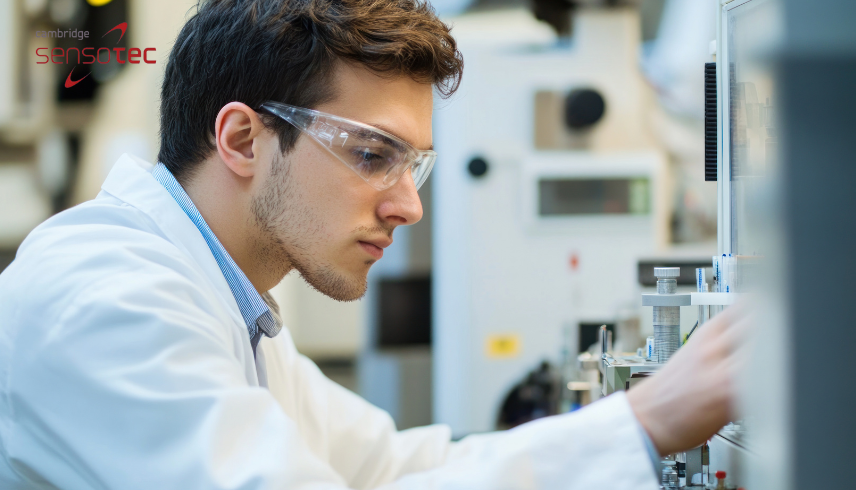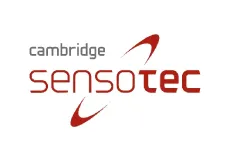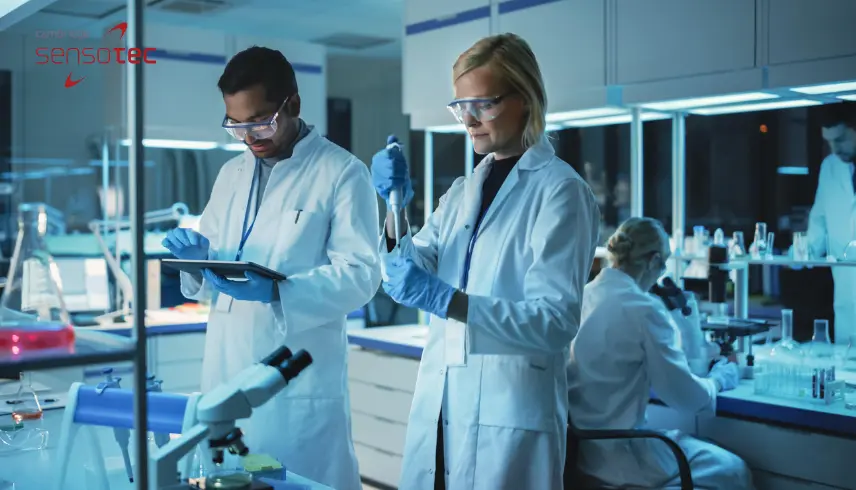

How to Measure Methane Gas
Accurate methane gas measurement is essential for ensuring safety, regulatory compliance, and environmental protection across various industries. Methane, a potent greenhouse gas, significantly impacts energy production and the environment. In this article, we explore the ins and outs of how to measure methane gas, its importance, sources and measurement solutions.
Understanding Methane Gas
What is Methane Gas?
Methane (CH₄) is the simplest hydrocarbon, consisting of one carbon atom bonded to four hydrogen atoms. It is a colourless, odourless, and highly flammable gas, serving as the primary component of natural gas. Methane is produced both naturally and through human activities. Naturally, it forms from the decomposition of organic matter in wetlands, marshes, and the digestive systems of ruminant animals. Human-induced sources include fossil fuel extraction, livestock farming, landfills, and wastewater treatment facilities.
Methane is a crucial energy source and a potent greenhouse gas with a global warming potential approximately 28 times greater than carbon dioxide over a 100-year period. Therefore, accurately measuring methane emissions is essential for environmental monitoring and climate change mitigation.
Importance of Measuring Methane Gas
Accurate methane measurement is vital for operational efficiency, safety, and environmental stewardship. Understanding the importance of methane measurement helps industries implement effective management and mitigation strategies.
Ensuring Safety and Compliance
Methane’s high flammability poses significant safety hazards, including explosion risks and asphyxiation in confined spaces. Accurate detection and measurement prevent such dangers, especially in industries like mining, oil and gas extraction, and agriculture.
Regulatory compliance is also critical. Many countries enforce strict laws on methane emissions to control air quality and mitigate climate change. Non-compliance can result in fines, legal actions, and reputational damage. Reliable methane measurement solutions help companies meet regulatory standards, avoid penalties, and maintain safer work environments.
Monitoring Environmental Impact
Methane is a potent greenhouse gas with a significantly higher global warming potential than carbon dioxide. Monitoring methane emissions is essential for understanding and mitigating its impact on climate change. Accurate measurement enables organisations to identify emission sources, quantify contributions, and develop targeted reduction strategies.
Environmental monitoring through methane measurement is vital in ecosystems like wetlands and permafrost regions, where methane emissions indicate broader environmental changes. Tracking these emissions provides insights into ecosystem health, aiding scientists and policymakers in implementing conservation measures.
Industries involved in waste management and agriculture can optimise processes by capturing and utilising methane, reducing greenhouse gas emissions and providing renewable energy, contributing to sustainable practices and energy efficiency.
Sources and Applications of Methane Gas
Methane is utilised across various industries due to its energy-rich properties:
- Energy Production: As the primary component of natural gas, methane is extensively used for heating, electricity generation, and as vehicle fuel. Its cleaner combustion compared to other fossil fuels makes it a preferred energy source.
- Agriculture: Methane is produced during the digestion of ruminants and from manure management systems. Capturing methane through biogas production offers a renewable energy source.
- Waste Management: Landfills generate methane through anaerobic decomposition of organic waste. Capturing this methane reduces greenhouse gas emissions and provides energy for electricity or heating.
- Industrial Processes: Manufacturing processes, including chemical production and refining, release methane as a by-product. Monitoring these emissions is critical for operational efficiency and environmental compliance.
- Environmental Monitoring: Methane measurements assess ecosystem health, particularly in wetlands and permafrost regions, indicating broader environmental changes.
- Safety Applications: In environments where methane may accumulate, such as mines and storage facilities, accurate detection prevents explosive hazards and ensures worker safety.
Understanding methane’s diverse sources and applications underscores the importance of precise measurement techniques essential for energy management, environmental protection, and safety assurance.
Measurement Solutions for Methane Gas
Selecting the appropriate methane measurement solution is essential for achieving accurate and reliable results. Various technologies and systems are available, each suited to different applications and environments.
Overview of Methane Gas Analysers
Methane gas analysers are specialised instruments designed to detect and quantify methane concentrations. They employ different technologies to achieve precise measurements, catering to diverse industry requirements.
Infrared Gas Detectors
Infrared gas detectors are widely used for methane measurement due to their high accuracy and real-time detection capabilities. These detectors operate on the principle that methane molecules absorb specific wavelengths of infrared light. By measuring this absorption, methane concentration is determined accurately. IR detectors are particularly effective in high-methane environments, as they are less susceptible to interference from other gases. Their long-term stability and minimal maintenance make them ideal for continuous monitoring applications.
Catalytic Bead Sensors
Catalytic bead sensors, or pellistors, are another common technology for methane detection. They function by oxidising methane on a heated catalyst surface, causing a temperature change that correlates to gas concentration. These sensors are highly sensitive, suitable for leak detection and safety applications. Portable gas detectors often use catalytic bead sensors due to their compact size and low power consumption. However, they may require regular calibration and are sensitive to environmental factors like humidity and temperature.
Cambridge Sensotec’s Rapidox Gas Analysers
Cambridge Sensotec’s Rapidox gas analysers, including the Rapidox 1100 Methane Analyser, are renowned for their precision, reliability, and advanced features. The Rapidox 1100 is the most cost-effective and versatile range of CH₄ gas analysers, equipped with either an infrared (IR) gas sensor or a tuneable laser diode sensor depending on the application.
Utilising cutting-edge IR technology, Rapidox analysers offer high sensitivity and rapid response times, ideal for both portable and fixed installations. Their robust design ensures durability in harsh environments, while user-friendly interfaces facilitate easy operation and data integration.
Portable vs. Fixed Measurement Systems
Choosing between portable and fixed systems depends on application-specific requirements.
Portable Measurement Systems: These analysers offer flexibility and mobility, ideal for on-site inspections, leak detection, and emergency response. Lightweight and compact, portable systems like the Rapidox 1100 Methane Analyser are essential for industries needing frequent monitoring across different sites or facility areas. Advanced features such as data logging and wireless connectivity enhance functionality.
Fixed Measurement Systems: Installed permanently in specific locations, fixed systems provide continuous methane monitoring. Integrated into a facility’s infrastructure, they offer real-time data and automated alerts for elevated methane levels. Fixed systems are crucial for ongoing safety and compliance in environments with constant methane exposure, such as industrial plants and refineries. They often include remote monitoring, data integration with management systems, and redundant sensors to ensure reliability and accuracy.
Both portable and fixed systems complement each other in comprehensive methane management strategies, offering versatility and consistent, long-term monitoring.
Key Features of Effective Methane Gas Measurement Solutions
Selecting the right methane gas measurement solution involves understanding essential features that ensure accurate, reliable, and efficient monitoring. These features enhance analyser performance and align with various application needs.
Accuracy and Sensitivity
Accuracy is critical in methane measurement, determining data reliability. High-accuracy sensors minimise false readings, preventing safety hazards and regulatory non-compliance.
Sensitivity refers to the analyser’s ability to detect low methane concentrations, crucial for early leak detection and preventing accumulation in confined spaces.
Response Time and Real-Time Monitoring
Response time is the speed at which an analyser detects and reports methane level changes. Rapid response is essential for real-time monitoring, allowing immediate action in case of gas leaks or concentration spikes. Real-time monitoring enhances safety by providing continuous oversight and enabling prompt responses to emerging hazards.
Durability and Reliability in Various Environments
Methane measurement solutions must withstand harsh conditions to maintain performance.
Durability: refers to resistance against physical and environmental stressors like extreme temperatures, humidity, dust, and corrosive substances.
Reliability: ensures the device functions correctly over extended periods without frequent maintenance or calibration.
Compliance with Industry Standards
Compliance with industry standards ensures methane measurement solutions meet regulatory requirements and safety protocols. Standards like ISO, ANSI, and local regulations dictate performance and operational criteria, ensuring consistency and reliability across applications.
Choosing the Right Methane Gas Analyser
Selecting the appropriate methane gas analyser involves assessing specific needs, understanding available technologies, and considering factors that influence performance and suitability.
Assessing Your Specific Needs
Evaluate requirements such as the environment where the analyser will be used, methane concentration ranges, measurement frequency, and portability. Assessing these needs narrows down options to solutions that best fit your operational context.
Comparing Different Technologies
Methane gas analysers utilise various detection technologies:
- Infrared (IR) Gas Detectors: High accuracy and sensitivity, ideal for real-time monitoring.
- Catalytic Bead Sensors (Pellistors): Highly sensitive, suitable for leak detection but require frequent calibration.
- Electrochemical Sensors: Good sensitivity for detecting multiple gases but may have shorter lifespans.
Comparing these technologies based on specific needs helps determine the most suitable option.
If you need help, contact Cambridge Sensotec, we are committed to providing top-notch assistance and expert guidance for all your gas analysis needs.
Why Choose Cambridge Sensotec for Methane Gas Measurement
Cambridge Sensotec stands out as a trusted leader in gas analysis solutions, offering advanced expertise and comprehensive support.
Expertise and Experience in Gas Analysis
With decades of experience, Cambridge Sensotec knows everything there is to know about gas analysis solutions. Visit the wide-range of solutions providing accurate and reliable measurements that enhance safety, compliance, and efficiency.
Comprehensive Customer Support and Service
Choosing Cambridge Sensotec means partnering with a company that prioritises customer satisfaction and support. Their comprehensive customer service includes:
- Technical Support: Assistance with installation, calibration, and troubleshooting.
- Training and Education: Programmes to educate users on effective operation and maintenance.
- Maintenance and Calibration Services: Ensuring longevity and accuracy of measurement solutions.
- Customised Solutions: Tailored to specific applications and requirements.
This commitment ensures clients can rely on Cambridge Sensotec for high-quality gas analysers and ongoing assistance.
Conclusion
Accurate methane gas measurement is essential for safety, regulatory compliance, and environmental protection across industries. Understanding methane gas, its importance, sources and applications, and the need for precise measurement forms the foundation for effective gas management strategies.
Choosing the right methane gas analyser involves assessing specific needs, comparing available technologies, and considering performance factors. Here to help you, Cambridge Sensotec stands out as a leader, offering expertise, innovative technology, and comprehensive support – the perfect choice for your gas analysis solutions.


